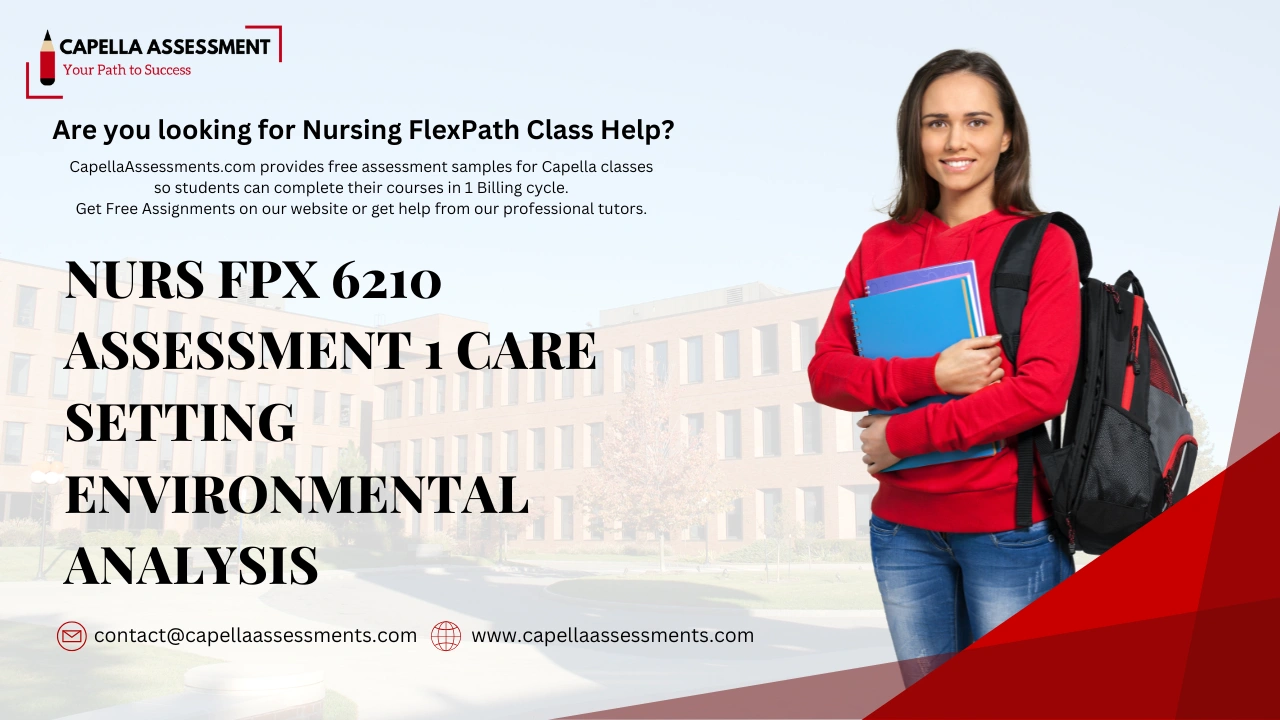NURS FPX 6210 Assessment 3 Strategic Visioning With Stakeholders
NURS FPX 6210 Assessment 3 Strategic Visioning With Stakeholders Name Capella university NURS-FPX 6210 Leadership and Management for Nurse Executives Prof. Name Date NURS FPX 6210 Assessment 3 Strategic Visioning With Stakeholders Hi. My name is ______, and today, I am presenting on Strategic Visioning with Stakeholders within a care setting. Strategic visioning is key to offering guidance to healthcare organizations in pursuit of excellence. Strategic Visioning with Stakeholders Nowadays, patient safety is considered to be the cornerstone of health care and a quality care provider. As may be defined, it is the prevention of medical errors(MEs) and adverse events (AEs) related to health care. Safety is the minimal risk of harm to patients from healthcare-associated MEs and AEs. In developing safer health care regarding patients, it is vital to identify the potential perils and strategies that may lessen them. Commitment to patient safety encompasses much more than meeting regulatory standards; it represents a cultural way of being defined by transparency, accountability, and continuous improvement (Stevens et al., 2021). This presentation covers stakeholder collaboration in formulating a strategic vision and articulating an enhanced approach to patient safety within our care setting. We will look at how key management skills like critical thinking, problem-solving, communication, and collaboration can be utilized in the development of solid practices that meet the challenges in pursuing our goals related to patient safety. Sharing a vision for reduction of risk and overall improvement of quality with stakeholders will be developed and shared. Strategic Plan Summary The strategic plan for the care setting focuses on improving quality, ensuring safety for patients, and delivering better care through a multidimensional approach that encompasses the integration of Evidence-Based Practices (EBPs) and stakeholders. This broad plan is channeled toward four key objectives, each one addressing different areas where improvement in the organization should be achieved. The first short-term goal is to achieve a 20% reduction in preventable MEs within one year. Because of this, targeted interventions will be carried out in the care setting, focusing on these high-risk areas, especially in the ED and surgical units. Interventions will involve the implementation of enhanced communication with standardized handoffs and interdisciplinary team meetings monthly to ensure that everyone is on the same page regarding patient care (McCoy et al., 2020). The enhancement of documentation processes will be through training sessions on the most accurate and timely practices. Regular quarterly safety training sessions for all health professional staff will reinforce these strategies. Metrics such as incident reports and error rates per 1,000 patient encounters will be used to measure progress monthly against the attainment of the target by the end of the year. NURS FPX 6210 Assessment 3 Strategic Visioning With Stakeholders The long-term objective is to enhance collaboration and communication within the team so that within three years, there would have been a 30 percent improvement in collaboration across departments and in the satisfaction of staff. In this direction, the setting would be introducing advanced digital tools that guarantee immediate access to information dissemination across the staff and, in this manner, promote easy access to vital patient information across departments. This would be complemented by a series of intensive workshops on teamwork and communication skills, which would extend into the field in order to break down silos and ensure coherent teamwork across departments. Feedback surveys will be conducted twice a year to see how these events are working in bringing about improvement and building good team dynamics and collaboration (Stevens et al., 2021). At the end of the three years, the care setting would have increased its staff satisfaction and interdepartmental partnership by 30%, as evidenced by survey results and participation rates in interdepartmental projects. Weakness and Threats Although the proposed strategic plan is in line with the mission of the care setting to provide great and patient-centered care, it recognizes a number of inherent weaknesses and threats that make the successful implementation of the same challenging. For instance, Inadequate resources may make the effective implementation of the safety initiatives difficult. Budgetary constraints are usually stringent in the healthcare landscape, and financial and human resources cannot be adequately apportioned to support the highly ambitious goals indicated within the plan. Moreover, the staff may resist such changes as well because healthcare professionals are usually set in their ways and accustomed to old routines and ways of working. New protocols and training programs call for a change in mindsets, which not all staff can afford to make (Herrmann et al., 2022). There is competition for priorities within the organization that takes away crucial focus and resources from these very vital patient safety and quality care improvement efforts. This means that the fast-moving environment characteristic of health care requires swift responses in most operational imperatives, making long-term attention to quality initiatives difficult. The other probable threat is a rapid alteration in health regulations and standards, which, in due time, compels modifications in the strategy plan. Conformity to new rules might take some other resources and could impact the timeline of achieving the presented goals. Lastly, external factors might include a shift in patient demographics, the introduction of new healthcare technologies, and the sustained impact of public health crises- highly infectious pandemics, for example, can be particularly influential in how well the strategic plan works. These can produce unexpected challenges that test the agility and adaptiveness of an organization (Herrmann et al., 2022). Methods for Engaging Stakeholders and Important Constituents This would mean that effective dissemination of the care setting’s strategic plan to improve patient safety and care delivery involves a robust strategy for various stakeholder groups. Primary stakeholder groups will include senior leadership at the hospitals, health professionals, nurses, support staff-patients, their families, and even external stakeholders constituting community leaders and regulatory bodies. Communication will be extended to the senior leaders through extensive presentations at the strategic meeting levels, and the plan will be mentioned in relation to the care setting’s mission, vision, and values (Dinius et al., 2021). Updates will also be carried out



